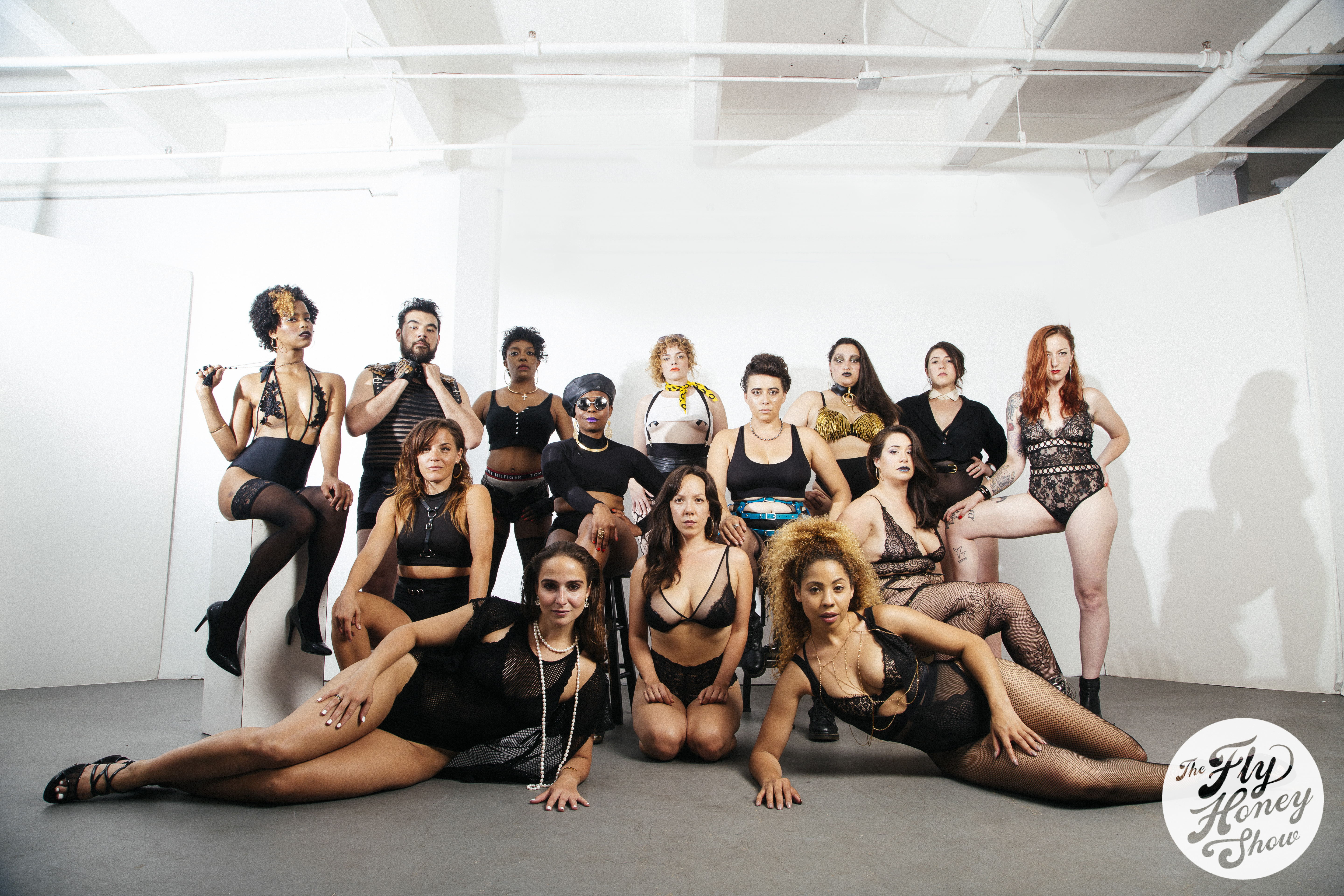CHICAGO — First, a couple of admissions: Until last night, I had never attended the Fly Honey Show. And I only made it through the first half.
A swarm of bodies in black lace, leather and fringe step-touched their way around the Den Theatre’s largest of five performance spaces, which was filled to capacity with tiered seating and standing room on two of four sides. The dance numbers — the next mostly like the one before — are peppered with special guests performing music, dance, and spoken word, and the whole evening is steered by co-hosts Mary Williamson, Molly Brennan, and Sydney Charles. The Fly Honey Show is brash, bold, and unapologetically obscene, and it’s this, plus its progressive messaging about body- and sex-positivity, that brings people out in droves.

It’s not that I was having a bad time, exactly. It’s just, a 10:00 p.m. start time doesn’t exactly jive with my usual 4:45 a.m. wake-up call, and after twelve acts and about 105 minutes of alternative cabaret before intermission, I think I’d gotten the idea. Does this make me unadventurous? A fuddy-duddy? A prude? Probably, but bear with me while I tell you all the reasons you should see the Fly Honey Show if you haven’t already.
There’s something to be said about these performers, who come in all races, genders, and sizes, reclaiming the strip tease. The Fly Honey Show gives its huge cast powerful agency to show themselves fully and own their sexuality in a safe space. To ensure that happens, there are strict rules about attendance and participation: the two major ones are no touching without permission, and no assumptions about how people identify.
And at intervals, some serious art happens. On the night I attended, powerhouse singers Micha, Becca Brown and Bran Moorhead belted with the spectacular Fly Honey band; Sarah Squirm lived up to her name with a hilariously uncomfortable comedy set about pubic hair; and Nora Sharp used dance and spoken word to talk about their anxieties around sex — basically cutting the tension and making it OK for anyone in the room who might have been feeling inadequately unsexy.
The rest was mainly T&A, with a layer of clothing coming off of the large group of dancers (some professionals, some amateurs) about every half-hour during the dances. There’s enough butt slapping, hip thrusting, high kicks and pretend cunnilingus to satisfy almost anyone, but I left with some looming questions about the bigger picture.
Despite its radical feminist viewpoint, the Fly Honeys, for the most part, give us a fairly homogenized view on sex: black lace, leather harnesses and butt cheeks, pasties and pursed lips. But sexual awakening isn’t always about that. Subtlety can be a powerful change agent; the hive feels, well, a bit trapped in a bubble of queer, intersectional, body-loving goodness.
And if that’s your jam, keep doing it. But this is also a space that, despite a genuine platform of inclusivity, does not appear to have made much room for people with disabilities, seniors or religiously conservative people, all of whom go through their own journeys exploring sexuality, their bodies, and gender expression, and how these parts of ourselves evolve over time. As we reconcile with who we are and how we navigate the world, everyone asks themselves these questions at some point, some more publicly than others.
I don’t think the Fly Honey Show is exactly trying to bully people into an outward-facing expression of sex — the show, after all, takes place in a dark room in the middle of the night — and perhaps it’s just a matter of time until these gaps in representation are filled.
But consider what else could come out of the amazing momentum that drives five weekends of full audiences and literally hundreds of performers, many of whom opt in for no pay. What if the profits of the Fly Honey Show were shared with organizations which turn body-positivity and sex-positivity into outcome-driven community action? (Howard Brown Health and the Sex Workers Outreach Project come to mind.) What if a series of community talks could reach people who never would, and never will go to the Fly Honey Show, to share the message of body positivity with them? If the Fly Honeys are preaching to the choir, how do you spread that gospel to people who honestly need to hear it?
—
The Fly Honey Show continues through Sept. 9, 10:00 p.m. at the Den Theatre, 1331 N. Milwaukee Ave. Tickets are $20-80, available at www.theflyhoneyshow.com.
Correction: In a previous version, it was implied that all performers receive no pay. The core group of performers and production team are paid, while a rotating cast of ensemble members are volunteers.
